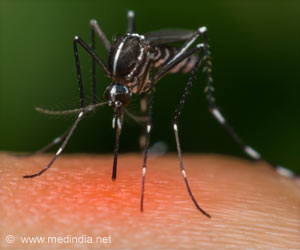People in households/dormitories with An. stephensi positivity had a 270% higher risk of malaria infection than those in households/dormitories where An. stephensi was not detected.
In addition, two other biological threats for the control of malaria were identified: drug resistance and diagnostic resistance of the parasite.
Advertisement
Dr. Luigi Sedda from the Lancaster Ecology and Epidemiology Group at Lancaster University Medical School is a joint first author on the paper which is published in Nature Medicine.
He said: “‘This is a very important finding. The mosquito that has spread in the Horn of Africa from Asia drove a major urban malaria outbreak in Ethiopia. An. stephensi is posing important public health concerns due to the increase in geographical presence, the capacity to persist throughout the year and to resist current insecticides, and to transmit drug and diagnostic resistant parasites.”
The capacity of Anopheles stephensi to use manmade water storage containers which are abundant in rapidly expanding African urban settings, coupled with its unique ecology, behavioral plasticity and resistance to major insecticides, makes it unamenable to conventional mosquito control tools.
Dr. Sedda concluded: “The epidemiological characteristics of An. stephensi driven malaria can challenge the expectations for the new malaria vaccines to reduce the burden of malaria disease and deaths in Africa, the continent that was already highly hit by malaria and where successes in malaria reduction are currently stalled.”
Reference :
- Evidence for a role of Anopheles stephensi in the spread of drug and diagnosis-resistant malaria in Africa – (https://www.nature.com/articles/s41591-023-02641-9)
Source: Eurekalert



